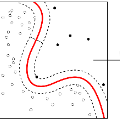Cyber-physical systems are infrastructures that use digital information such as network communications and sensor readings to control entities in the physical world. Many cyber-physical systems in airports, hospitals and nuclear power plants are regarded as critical infrastructures since a disruption of its normal functionality can result in negative consequences for the society. In the last few years, some security solutions for cyber-physical systems based on artificial intelligence have been proposed. Nevertheless, knowledge domain is required to properly setup and train artificial intelligence algorithms. Our work proposes a novel anomaly detection framework based on error space reconstruction, where genetic algorithms are used to perform hyperparameter optimization of machine learning methods. The proposed method achieved an F1-score of 87.89% in the SWaT dataset.
翻译:网络物理系统是使用网络通信和传感器读数等数字信息来控制实体的基础设施,机场、医院和核电厂的许多网络物理系统被视为关键基础设施,因为其正常功能的中断可能对社会造成负面后果;过去几年,提出了基于人工智能的网络物理系统的一些安全解决方案;然而,需要知识领域来适当建立和培训人工智能算法;我们的工作提出了基于错误空间重建的新奇异常探测框架,利用遗传算法来进行机器学习方法超光谱优化;拟议的方法在SWAT数据集中达到了87.89%的F1分数。



